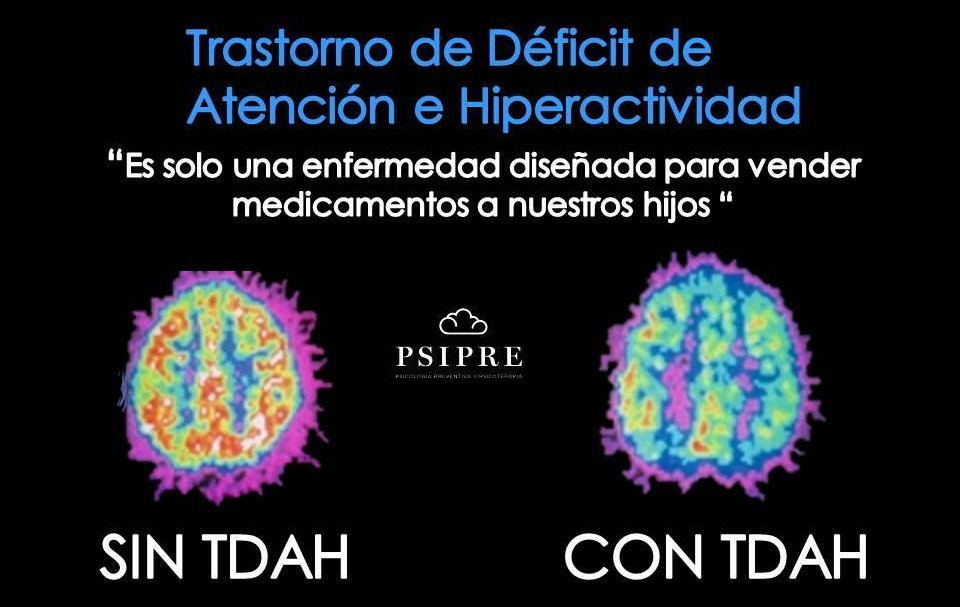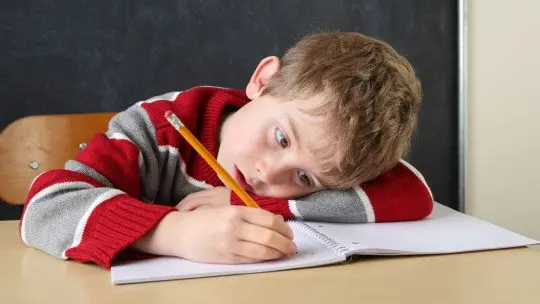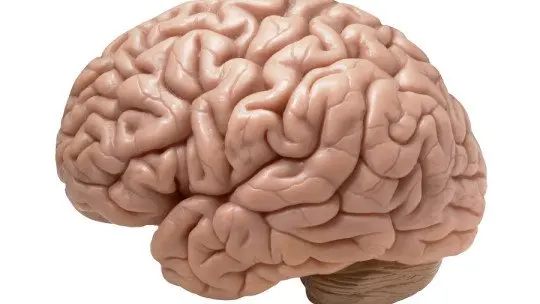
We have all heard of ADHD. Attention Deficit Hyperactivity Disorder is a psychological disorder that seems to be in fashion in recent times: there are more and more children who go from “being nervous” to being diagnosed with this psychopathology.
There are many professionals who have raised their voices and warned that perhaps we are abusing this diagnosis too much, but the objective of this article is not to question this issue, but simply define ADHD and detail the criteria to detect it. We will also emphasize explain the two types of ADHD.

What is Attention Deficit Hyperactivity Disorder?
The acronyms ADHD they mean Attention Deficit Hyperactivity Disorder. It is characterized by severe hyperactivity, impulsivity and inattention, and is a type of psychological alteration that appears during childhood.
It is usually associated with other disorders such as oppositional defiant disorder, conduct disorder or difficulty in reading, and is usually accompanied and detected by difficulties in school performance or conflicts in the family environment or with friends.
Studies of families, adoptions and twins seem to corroborate the importance of the genetic factor in this disorder.
Types of ADHD and their characteristics
There are two types of ADHD:
Below you have the symptoms associated with each of these subtypes, but keep in mind that to diagnose ADHD, These symptoms must persist for at least 6 months with a maladaptive intensity and incoherent in relation to the level of development, and that at least six of the following symptoms described in the DSM-5 diagnostic manual must occur.
1. ADHD Inattention
This type of ADHD is characterized by intense symptoms linked to attention management problems, which affect both academic performance and social interactions.
- Frequently does not pay sufficient attention to details or makes careless errors in schoolwork, work, or other activities
- Often shows difficulties in maintaining attention on tasks or recreational activities
- Often appears not to listen when spoken to directly
- Often does not follow instructions and does not complete schoolwork, assignments, or workplace obligations (not due to oppositional behavior or inability to understand instructions)
- Often has difficulty organizing tasks and activities
- Often avoids, dislikes, or is reluctant to engage in tasks that require sustained mental effort (such as school or household work)
- Often misplaces items needed for tasks or activities, such as toys or school supplies
- Often easily distracted by irrelevant stimuli
- Often neglected in daily activities
2. ADHD Hyperactivity
This type of Attention Deficit Hyperactivity Disorder focuses on the poor regulation of behavior, which is erratic and in which pauses are scarce.
- Often moves hands and feet excessively, or shifts restlessly in his seat
- Often leaves his/her seat in class or in other situations where he/she is expected to remain seated
- Often runs or jumps excessively in situations where it is inappropriate to do so (in adolescents or adults it may be limited to subjective feelings of restlessness)
- Often has difficulty playing or engaging in leisure activities quietly
- Often “running” or acting as if it has a motor
- Often talks excessively Impulsivity
- Often rushes answers before questions have been completed
- Often has difficulty keeping track
- Often interrupts or intrudes on the activities of others (for example, butts into conversations or games).
Possible causes
At the moment There is no known single cause that explains the appearance of ADHD.although it has been proven that certain events that occur throughout the development of the organism cause this disorder to arise, and it is also known that there are genetic predispositions. For example, tobacco consumption by pregnant women has an impact on the fetus, increasing the likelihood of developing one of the types of ADHD.
Therapies and treatments for children and adults with ADHD
Finally, it is worth noting that there are currently many effective treatments to minimize the impact of ADHD on the life of the child, adolescent or adult, and that not all of them involve medication. For example, cognitive and behavioral therapies, parenting and social skills training, and psychopedagogical reeducation are good alternatives.
One of the (few) advantages of Attention Deficit Hyperactivity Disorder “being fashionable” is that studies are continually being carried out to improve treatments and professionals can act very efficiently, both in its detection and in its treatment. .
Likewise, It would be good if we did not forget that children, as children, are nervous and this is normal behavior that should not worry us.. It will only be a reason for special attention in the event that the diagnostic criteria that we have mentioned are met, when it will be necessary to go to a professional to guide us.
Likewise, it is important to insist that it has been proven that treatments that do not involve medication are equally or more effective in treating ADHD and therefore we must follow the instructions of the mental health professional. A comprehensive approach to this type of childhood behavioral disorders can be much more useful than approaches that prioritize direct intervention and the administration of psychotropic drugs.








